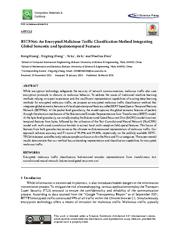A copy of this work was available on the public web and has been preserved in the Wayback Machine. The capture dates from 2024; you can also visit the original URL.
The file type is application/pdf.
BSTFNet: An Encrypted Malicious Traffic Classification Method Integrating Global Semantic and Spatiotemporal Features
2024
Computers Materials & Continua
While encryption technology safeguards the security of network communications, malicious traffic also uses encryption protocols to obscure its malicious behavior. To address the issues of traditional machine learning methods relying on expert experience and the insufficient representation capabilities of existing deep learning methods for encrypted malicious traffic, we propose an encrypted malicious traffic classification method that integrates global semantic features with local
doi:10.32604/cmc.2024.047918
fatcat:bmux6w7vnzecrn3r4xoucudz7e

